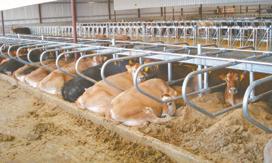Brick foundation of













































































 LBY BEN SONNEK | STAFF WRITER
LBY BEN SONNEK | STAFF WRITER









ONG PRAIRIE – The Brickhouse Farm homestead may be over 100 years old, handed down through a family for generations, but there is always something new at the 240 acres east of Long Prairie, whether it is Wagyu beef, lamb, garlic, maple syrup or – perhaps someday – honey. It is not always an easy lifestyle, but being able to be mostly self-sufficient while also selling quality organic meat and produce, all in a family environment, has made a good living for the Barlage family.
“I’ve worked multitudes of different jobs,” said Ben Barlage, current owner of Brickhouse Farm. “I’ve hated some, I’ve loved some, but this isn’t a job for me; it’s a lifestyle.”

The original farm began when Joachim and Heinrike Heinck immigrated from Germany with their family, settling the farmland in 1890. The original house was built in 1892, and it has the same orange bricks as a couple of its neighbors because they were all sourced from a site right across the street from where Brickhouse Farm remains today.


People coming down the farm’s driveway are actually approaching what used to be the back of the house.
“The road to town used to come through the backyard, through our woods and into town,” Barlage said. “The house was built to face that way.”
Joachim and Heinrike Heinck handed down the










farm to their son, Johann Heinck, and his wife, Bertha. Their tier of the family tree only had daughters.
“They put in an ad in the newspaper, looking for male farmhands,” Barlage said. “That’s when (Wilhelm) Kroll answered and came to work on the farm.”

Wilhelm Kroll married one of Johann and Bertha Heinck’s daughters, Hulda, and the farm operated under the Kroll name for several generations – from them down to John Kroll and then to Hans Kroll.
Margaret, Hans Kroll’s daughter, was born in the brick house. She married Barlage, and they took over the Kroll Farm at the start of 2019. They are the sixth generation of family to operate the farm, and their children – Ezra, 7, Thea, 4, and Jude, 1 – could be the seventh someday.




generation puts own stamp on homestead










Copyright 2014

522 Sinclair Lewis Ave. Sauk Centre, MN 56378
Phone: 320-352-6577 Fax: 320-352-5647
Grace Jeurissen, Editor grace.j@star-pub.com
Jan Lefebvre, Writer jan.l@star-pub.com Herman Lensing, Writer herman@melrosebeacon.com Tiffany Klaphake, Writer tiffany.k@star-pub.com
Carol Moorman, Writer carol@melrosebeacon.com
Natasha Barber, Writer natasha@saukherald.com Ben Sonnek, Writer ben.s@saukherald.com
Sarah Colburn Staff Writer
Story ideas send to: grace.j@star-pub.com
SALES STAFF
Robin Burnette, 320-351-7837 robin@saukherald.com
Missy Traeger, 320-291-9899 missy@saukherald.com Tim Vos, 320-845-2700 tim@albanyenterprise.com
Mike Schafer, 320-894-7825 mike.s@dairystar.com
Warren Stone, 320-249-9182 warren@star-pub.com Jaime Ostendorf, 320-309-1988 Jaime@star-pub.com
Bob Leukam, 320-260-1248 bob.l@star-pub.com


Of course, once Barlage began running the farm, the “Kroll Farms” name did not seem applicable anymore.

“I didn’t want to change the name to Barlage Farms,” Barlage said. “I wanted to continue on the legacy of the farm long after I passed away. When we were thinking about names, my wife and I came to Brickhouse Farm because of the staple, the brick house. It’s the thing that’s been here the longest, and it’s the first thing you see when you pull up the driveway.”
None of the other farm
buildings are as old as the brick house. The original haybarn burned down many years ago because of an arsonist farmhand who was also responsible for destroying other area barns.
The house has been expanded over the years. Hans Kroll did a lot of remodeling to the inside when he took over. The former
house’s layout had living quarters for two families, and the renovations opened it up into a larger space for a single family.
The farm has been certified organic since 2003 – although the family had always been farming like that anyway.






“My father-in-law would say that he farmed organically by neglect for many, many years,” Barlage said. “He never used sprays or anything like that. Then, his oldest daughter, Jessica, was the one who said, ‘You should look into organic.’”
(Left) Bottles of maple syrup, made by the Kroll family, are lined up Jan. 6 at Brickhouse Farm. The syrup operation is independent of the farm.

farm, they ended up dissolving the organic dairy because the market was declining. The farm would have also had to deal with trucking costs, and their quality level would have had their product on a conventional truck instead of a specialized truck suited for organic milk.
Deadlines: Country Acres will be published the first Saturdays of April, May, June, September, October and November, and the third Saturday of every month. Deadline for news and advertising is the Thursday before publication.

ISSN: Print 2834-6440 Online 2834-6459
The Kroll Farm had been milking dairy cows at least as far back as Wilhelm and Hulda Kroll. However, when the Barlages were given management of the
“We couldn’t figure out what was going on,” Barlage said. “We put in a new bulk tank and did this and that, and it ended up being a little too stressful with too many unknowns. They always wanted us to grow our herd, and we wanted to continue to remain self-sustaining, so at that point in time, I decided to end the dairy and switch over more to cash crops, beef, lamb and more of that industry.”
Aside from a pair of dairy cows kept for personal use, Brickhouse Farm’s dairy concluded in April 2019. The next month, they began breeding Wagyu beef through artificial insemination. Barlage found out about the variety while researching different kinds of beef cattle and began crossbreeding Japanese Black Wagyu with his existing breeds.



“I love change, and farming is nothing but change.”
- Ben Barlage

“When I signed up for it, I thought, ‘Oh, you just dig a hole, put some stuff in it and call it a day,’” Barlage said. “No, it required engineering plans and stuff like that.”
Another CSP item Brickhouse Farm has is a fouracre monarch habitat. The butterflies help pollenate flowers – including the ones on the farm’s apple, pear and cherry trees as well as the vegetables – which in turn are good for bees. Barlage has a beehive on the property, and while he has not had much luck in getting a hive to overwinter, he is continuing his efforts.
“The honey we have gotten so far has been really good,” Barlage said. “This year, I didn’t have a strong enough queen, so I didn’t have a strong enough colony. I did last year, but there was that really cold spell at the end of February where we didn’t even get above zero, and that one killed them. We’re getting there; we’re learning a lot, and we’ll just keep trying.”
Barlage enjoys trying new things for Brickhouse Farm. This year, it is organic no-till for his soybeans, planted into rye.
“There’s always stuff to be learned and changed,” Barlage said. “I love change, and farming is nothing but change.”
Brickhouse Farm also raises corn, wheat, hay and a barley-forage-pea mix for the cows.


For Barlage, his favorite part of running Brickhouse Farm is how it is outside – both outdoors and out of the everyday rat race – and it lets him provide for and work with family.
“The idea that I can go outside, and my son or daughter can ride in the tractor with me or they can help me milk the cows, and I come in for lunch and they and my wife are here, that for me is hands-down the best reason to farm,” Barlage said. “I get to work with my family, and that’s what it’s all about.”
Barlage appreciates it when people come to a small farm for their food needs instead of just a grocery store – and the farm does not even have to be his. From what he has seen, the recent volatility of grocery prices has helped consumers become more aware of their local farms’ options.





“We need to support small farms for people because we can’t just have big farms all the time,” Barlage said. “Even if you don’t support me, support a small farm somewhere because we all need it.”
(Above) The Barlage family – Ezra (from left), Ben, Thea, Jude and Margaret – pile into the tractor in October 2022 at Brickhouse Farm near Long Prairie. Ben and Margaret Barlage are the sixth generation of family to own the farm.




 BY SARAH COLBURN STAFF WRITER
BY SARAH COLBURN STAFF WRITER

HEWITT - Standing at a full 6-feet, 5-inches tall and weighing in the upper 2,000s, is Buferd, Wally Wiese’s pet steer.



“He’s gentle, never had a rope on him,” Wiese said. “If I did, I wouldn’t be able to hold him down anyhow.”
Buferd eats 25 to 30 pounds of grain a day and, in the summer, consumes 20 gallons of water a day. The castrated Holstein steer eats as much hay as he wants to.

Wiese said the seven-year-old mammoth attracts attention. The neighbor’s grandkids trek over two to three times a day just to check him out, and, when he’s out in the pasture, people stop their cars on the road just to get a look.
“The kids are impressed, even the older people,” Wiese said. “They can’t believe he’s so big.”
Daren M. Sheffield is the director of performance programs at Holstein Association USA. He said the size of ani-

mals has been increasing ever so slightly through the years via the use of selective breeding and artificial insemination. As farmers aim to breed cows that produce more milk, their size typically increases.
“What makes them odd and unique is they, castrated males like that, are usually not at a mature enough age that they would reach that height so it makes them stand out,” he said.

Typically, the steers are sold for meat before they gain Buferd’s level of height and weight, and most, he said, aren’t around for more than a few years; it’s rare for a steer to reach seven years of age.
Typically, steers are slaughtered around 15 months of age at a weight of 1,300 to 1,400 pounds.

So was the case with Wiese’s other steers.

At the end of his dairying career, Wiese said he had a tall cow that he stood on a bucket to breed artificially with a stature bull. He was hoping for a heifer calf and instead got Buferd. He
had a few other steers around the same time, which he began butchering, but by the time he got to Buferd, the steer was so big the butchering became cost prohibitive.
By that time, Buferd had also developed a personality.
“He’s easy to take care of,” Wiese said. “I have a single wire fence, not hot,




he doesn’t know it, but he respects it.”
For a long time, Buferd spent his days in pasture with two hors-



es. One died, and Wiese had to get rid of the other a month
“He’d walk around looking for the horse,” Wiese said. “That was his pet. When he saw the trailer come and the (other) horse get loaded

up, he started bellering. He didn’t like that.”



Though Wiese goes out to feed Buferd twice a day and scratch his belly and neck, he said it was clear the steer was sad, so Wiese talked to his nephews to come up with a solution.





















































































































The cold, blowing, snowy weather just before Christmas, 2022, in central Minnesota had some up sides.








The area had a chance to see early morning sun dogs. These atmospheric apparitions usually occur in winter. They are memorable because they are not daily occurrences – and they have the tradition of being predictors of something.

When the temperature, water particles and wind are just right, those living in the country can catch good views of sun dogs.

Sun dogs are one of the gifts from nature which are better appreciated the less one knows about the reason for them. They only occur when small bits of moisture (in this area, generally ice crystals) are blown though sunlight, causing rainbow-like arcs on either side of the sun or sometimes encircling the sun.
While sun dogs, like rainbows, are refractions of light, there is meteorologically a bit of difference. Rainbows indicate rain has passed or will soon end. Sun dogs are traditionally seen as signs of wet weather coming.
The sun dogs can be quite dazzling and throughout history have baffled, impressed and/or bothered people. A bit of research shows they don’t necessarily have to be associated with Arctic-like temperatures. They can be seen anywhere in the world, in any month, if the conditions are right. In this locale though, that usually means in the winter.
Different cultures have different names for the objects. In ancient Greece they are named parhelions, meaning “with the sun.” That is understandable – although a bright moon can also create the phenomenon. They were, even then, said to be predictors of wet weather.

Other references to them are “mock suns” or “false suns.” That is sort of understandable.









In Northern Europe and most of North America they are called sun dogs. Just how the name dog came to be associated with them is debated. One theory is that it is an adaptation of



the rarely used variant verb “dog”, meaning to pester and bother. In short, the objects were seen as tracking and trying to trap the sun. Another explanation is the name was adapted by English speakers in the Middle Ages from the Scandinavian word “dag.” The word is associated with dew or mist, possibly because misty conditions with the right sun can create similar objects in the sky. Some Northern European people told of wolves, sometimes called dogs, hounding or tracking the sun to devour it.
Throughout history, sun dogs have also been seen as portents of one kind or another. Their use as a predictor of something made it into Williams Shakespeare’s “Henry VI-Part 3,” when Edward of York says,

“Three glorious suns, each one a perfect sun;
Not separated with the racking clouds,





But sever’d in a pale clear-shining sky.



See, see! they join, embrace, and seem to kiss,
As if they vow’d some league inviolable:




Now are they but one lamp, one light, one sun.
In this the heaven figures some event.”

It is doubtful that is exactly what he said, but it is known that before the 1461 Battle of Mortimer’s Cross, Edward did convince his followers that the three suns, two of which are said to be sun dogs, were a sign they would win.
Not everyone has interpreted seeing sun dogs in such a positive manner. In the 1870s on the plains in North America, John Bourke (1846-1896) , during a campaign against the Cheyenne nation, reported seeing sun dogs and recorded that local lore said they were a harbinger of a blizzard.Just how accurate sun dogs are in predictions of wet weather is not stated anywhere, but whether they are or are not accurate, sun dogs are seen as something unique, and beautiful, in the sky. They are another example of why we like living on acres in the country.
















































































 BY JAN LEFEBVRE STAFF WRITER
BY JAN LEFEBVRE STAFF WRITER





ST. JOSEPH, Minn. –






When Sally Larson attained two rabbits in 2008 for her 4-yearold twins, Kallie and Courtney, she launched a new lifestyle for the Larson family.
Today, Larson’s Rabbitry houses 160 rabbits – New Zealands, Belgian Hares and Florida Whites. Hermes, a Holland Lop, and Oliver, a Mini Rex, live there as well.

The twins show New Zealands and Belgian Hares. They used to show Holland Lops but sold the herd when they graduated and moved from home.
Larson shows those breeds as well, but lately she has added Florida Whites to the rabbitry, which look like smaller New Zealands.
“But, do not call them that,” Larson said. “Breeders do not like that.”









Rabbit breeding is serious business, and breeders are protective of their breeds.


Every Larson rabbit has a pedigree and is officially regis-
tered with the American Rabbit Breeders Association (ARBA), which means that the Larsons know the parents, grandparents and great-grandparents of each rabbit. The Larsons have gold star rabbits as well.
“It takes years for people to start producing gold star rabbits,” Larson said.

The reason is that all rabbits in a gold star rabbit’s pedigree (parents, grandparents and great-grandparents) are registered through ARBA and are grand champions.

“Everything we breed now with New Zealands will be gold star rabbits because we will only breed from them (gold stars),” Larson said. “We have 17 gold star rabbits in the barn right now. Anything born from this point on will automatically be gold star.”

So far in their rabbit showing career, the twins together have 32 homegrown grand champion rabbits and Larson has 31. However, they are not resting on their laurels.
When a rabbit wins a show, it receives what is called a leg. If a rabbit wins Best of Breed
at three different shows (three legs), the rabbit is considered a grand champion. A breeder with 50 homegrown grand champions is considered a master breeder by ARBA, which gains the breeder a lot of respect and makes rabbits of that breeder more valuable. Each breed has its own national club that lists the top breeders with the highest showing points across the United States, and that means master breeders are the ones who make the list.

“Every year the top breeders change, but there are some who stay on the list every year,” Larson said.


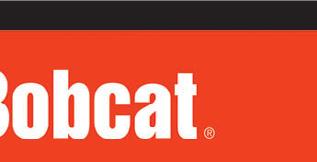

Since rabbits often compete against hundreds of other rabbits, each win is a major accomplishment. Therefore, the goal to become a master breeder is a lofty one. Larson is keeping her herd separate from the girls’ herd until they are all master breeders. At that point, they will merge them.

Before Kallie and Courtney sold their Holland Lops, one of their Hollands, Zenks Alyson Felix, won Best of Breed at the ARBA convention in Springfield, Massachusetts, where hundreds of Hollands competed for top Holland in the United States. Lops are popular because of their miniature cuteness and floppedover ears, so there are high numbers of competing Lops at each show.
“The girls showed Lops all of their






youth career,” Larson said. “In 2019 they became Top Youth Breeders in Holland Lop in the United States.”
They have shined with their other breeds as well.
“They placed grand or reserve in their breeds at the Minnesota State Fair every year since 2015,” Larson said.
Hermes, a Blue Iris Holland Lop, is also a national grand champion in agility.
“He jumps courses, does balance beams, goes through hoops and all that kind of good stuff,” Larson said. “He’s been doing agility for six years, but he is retired now.”



Larson said that rabbits are smart, knowing their names and seeming to settle down for shows as if they know what to do.
“Even though (within their breed) they all look alike, each one has its own personality,” Larson said.
*Offer ends 3/31/2023. Available at participating and eligible dealers only. Offer may vary by product type, series, model and select units in dealer’s current inventory. Must take delivery from dealer stock by 3/31/2023. Offers available on new equipment in US and Canada only. Some restrictions apply. Length of contract and rate may vary. Monthly payment subject to change. Prior purchases not eligible. See dealer for details. Financing provided on approval of credit by authorized Bobcat finance providers to well-qualified buyers. Administrative fees may apply. Offer not available to government accounts, national accounts and municipal/utility bid customers. Bobcat Company reserves the right to extend or discontinue any of these programs at any time without prior notice.





That doesn’t mean that they all behave. This was the case with one naughty Holland Lop that the Larsons at first named Muffin. Larson laughs when she recalls him.
“We thought he was a girl, but he turned out to be a boy,” Larson said. “So, we renamed him Sir Muffin.”
He was Kallie’s favorite rabbit. At a show, a judge tried to take him out of his cage. Sir Muffin demonstrated his love of jumping.
“He jumped right onto the judge’s head, leaped over to the show cages and proceeded to jump on each breeder’s head all the way down the row,” Larson said. “Everyone was



looking around, thinking, ‘What just happened?’”

However, Sir Muffin was a great show rabbit. He just liked to jump.
“I actually think he still won that show,” Larson said.
Sometimes raising rabbits brings sadness too.
Fireball was a Belgian Hare who was Minnesota’s top rabbit of all breeds in the 2021-22 show season.


“In ten months, he made it to top rabbit,” said Larson. “That means he won more BOBs than any other rabbit who showed that year, but at 10 months old, he died of an invasive cancer. I lost him just a few months ago, and that was tough.”


Looking back to 2008, it is remarkable that the












Larsons have come this far in 14 years after starting with two unremarkable rabbits, especially considering that the twins didn’t start showing those first rabbits until 2011. That was when their brother, Dakotah, a teenager at the time, thought his sevenyear-old sisters should join 4-H so that they could do shows. He wasn’t in 4-H himself but said it would be something fun he could do with his much younger sisters. He had no idea his ripple would create a giant wave.
For the first show, the judge informed the twins that their rabbits did not qualify because they weren’t purebreds. Their showing days could have ended there, but both girls had caught the showing bug.
“They each got a pair of New Zealands and
showed them the second year,” Larson said.
The pairs also began producing offspring, but it is a mistake to think breeding rabbits is easy.
“That’s a myth; it’s really hard to breed rabbits,” Larson said. “I’m trying to get some bred right now, but they’re just not interested.”
Once the girls started going to rabbit shows, they noticed other rabbit breeds.
“During one of the first shows, Courtney saw Holland Lops and wanted to add them,” Larson said. “Kallie wanted the Belgian Hares.”
Even though Belgian Hares look like hares, and their offspring are born with fur and with their eyes open like baby hares, they are considered rabbits because they are domesticated.
The twins began accumulating and growing rabbits, concentrating on their favorite breeds but always showing together in junior class competitions.
Then Dakotah graduated from high school.
“He went off to college, so Mom took over,” Larson said.
Soon she caught the bug as well and began showing rabbits in the open class, for those 18 and over. The twins, now 19, show in open class as well.
“I really like the big, fat, cuddly ones.”









As the Larson rabbits produced more kits, housing became a challenge. That is where Larson’s husband, Jaime, stepped in with his construction skills. He built a rabbitry of indoor and outdoor hutches, including heating and cooling systems, and retrofitted a trailer for transporting rabbits to and from shows across the country.


“His primary rabbit duty now is to stay home and hold down the fort when we go to shows,” Larson said.










That includes a lot of rabbit care. Larson said she appreciates the many ways he helps her and their daughters pursue their rabbit dreams.
Plus, the rabbits like Jaime. One New Zealand named Zenga prefers him to anyone else and only comes to the door of his hutch if the visitor is Jaime.
Mostly, though, the rabbits are Larson’s project, and she has turned her hobby into a fulltime career.




“This is what I do







now,” she said.


















She sells rabbits for showing and breeding, and some she sells as pets. The Larsons also raise meat rabbits. Throughout the years, they have been advocates for all things rabbit.
Larson is the current president of the Minnesota Rabbit Breeders Association. She also started Riverlakes Rabbit Club in her area, which had its first show last April and expects breeders from all over the state and nearby states for its second annual show in April














As Larson looks forward to the national show in Kentucky next October, which will mark 100 years of ARBA’s existence, she appreciates her fellow rabbit enthusiasts.


“The best thing about showing is not that you win,” Larson said. “It’s fun to win, but when you get to know the other breeders, it’s so much fun to go to the shows and talk with them. They cheer for our wins; we cheer for theirs. I have a huge rabbit family.”
Hardin’s SG Reno or “Reno” the Belgian Hare is held by Sally Larson Nov. 29 in front of many awards won by him and other rabbits owned by the Larson family. Reno’s name notes that he was born at and purchased from Hardin’s rabbitry, but his offspring born at Larson’s Rabbitry will have “Larson’s” at the front of their show names.











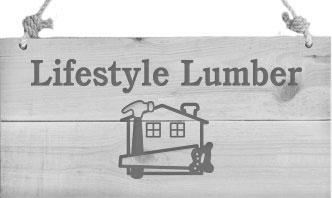
• 1 cup wild rice, rinsed and drained

• 1 (32 oz.)
Chicken Broth
• 6 tablespoons butter

• 1 teaspoon salt
• 1 cup chopped celery
• 1 cup onions, diced
• 1/2 teaspoon black pepper
• 1/2 teaspoon thyme or sage
• 1 bag seasoned crouton stuffing mix (I use partridge brand)

In medium pot, put wild rice and chicken broth together. Bring to boil turn down to simmer for 45 minutes. Broth should be all absorbed. Keep warm. In medium skillet melt butter. Add onions and celery saute until softened. Add chicken broth and cook until onions and celery are done. Add crouton stuffing mix and rice mix well. Add additional broth if to dry. I line my crockpot with a plastic cooker bag sprayed with oil. Add mixed ingredients to crockpot set on low. Cook for 4 hours until heated together. Double the recipe for a big crowd.
• 1 cup butter
• 1 cup Crisco oil

• 1 cup white sugar
• 1 cup brown sugar
• 1 egg
• 1 cup coconut flakes
• 1 cup Rice Krispies
• 1/2 cup chopped nuts
• 2-1/2 cups flour
• 1 teaspoon vanilla
• 1 teaspoon salt
• 1 teaspoon baking soda
• 1 teaspoon cream of tartar
Preheat oven to 350 F. Mix and beat butter, oil and sugar together. Add egg and vanilla. Stir the flour and spices together in separate bowl. Add to creamed sugar mixture; stir well. Add coconut, Rice Krispies and nuts. Roll in to walnut sized balls and place on an ungreased cookie sheet, two inches apart. You can press down some with a fork. Bake 10-12 minutes.
• 2
In large microwave bowl, melt candy coating at half power until melted. Stir in remaining ingredients. Drop large spoonfuls of mix on wok paper. Let cool then break apart. Store in tight container once cooled.
• 2 cups flour
• 1 teaspoon ginger
• 2 teaspoons baking soda
• 1 teaspoon cinnamon
• 1/2 teaspoon cloves
• 3/4 cup shortening





• 1 cup sugar
• 1 egg
• 1/4 cup molasses
• Sugar to roll cookies in
Preheat oven to 350 F. Mix together the dry ingredients. Inn separate bowl, cream shortening and sugar, add egg and molasses. Stir in dry ingredients. Roll into small balls, roll in sugar to coat. Place on ungreased cookie sheets two inches apart. Bake 12-15 minutes. Cool on wire rack and store in tight container.







































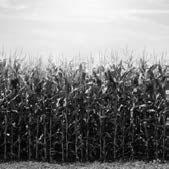

















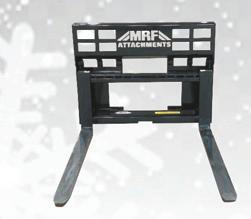
















nesota Ag in the Classroom and Farm Camp program were rebooted after the effects of the Covid-19 pandemic in schools. The programs needed to adjust and offer virtual learning opportunities.

Though the virtual tours of farms are a great option, Patsche believes that getting kids out to the farm to experience agriculture in its element is where the program makes its biggest impact.

“Nothing beats a hands-on experience,” she said.
Being an advocate
for agriculture is nothing new to Patsche. She became passionate about the industry while working and living alongside her husband, Chuck Patsche, a pork and crop farmer from Welcome, Minnesota. She didn’t come from a farm, but she said her husband’s passion for agriculture began to rub off on her.

“I started getting involved in agricultural boards and organizations and began to learn and be passionate about all forms of agriculture,” Patsche said.

She attended a conference in Kansas in 2012 that convinced her to start blogging about her family’s life on the farm. Though her plat-
form for reaching people is now based on Facebook, it started with her humble website.

Pashcke writes about her experiences on the farm and shares photos of things happening around their operation. She said she isn’t afraid to discuss current events and pressing issues in her blogs either.
“I’ve told other bloggers, ‘I’m not afraid to touch on the hot topic issues,’” she said. “People need to know how current events affect us as farmers.”



She doesn’t just shed light about current events. She also addresses both the good and the challenges that their farm faces throughout a year.
320-836-2135 or Toll Free 888-294-8686 Freeport • MN










Ritchie Ca t t l e Fountains ASK ABOUT CAJan21-1B-TV

Keep the weather outside & the comfort inside. Therm-Tech windows are built to last! CAJan21-1B-MT Lumber Company, Inc. Mondloch, Inc. 320-548-3255 125 Main St., St. Martin, MN 56376 | Fax: 320-548-3705

CALL OR STOP IN TODAY!



Inc. , Build with the Best!
Keep the cold out this season with Owens Corning Insulation! INNOVATIONS FOR LIVING® 29033 County Road 17 Freeport, MN 56331










1-888-276-1751 www.StRosaLumber.com CA-JAN21-1B-MT

3 3






ing her blog, she is the right-hand woman for Chuck during field work. or CAJan21-1B-WS























































